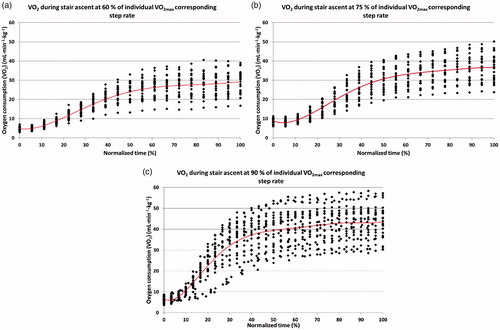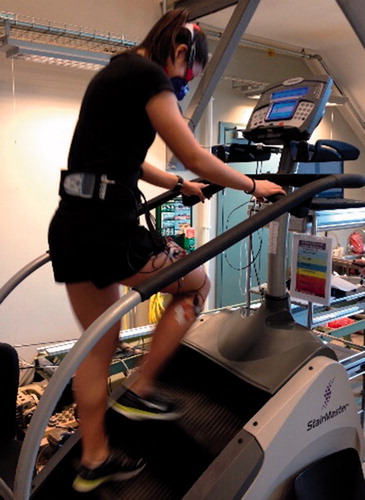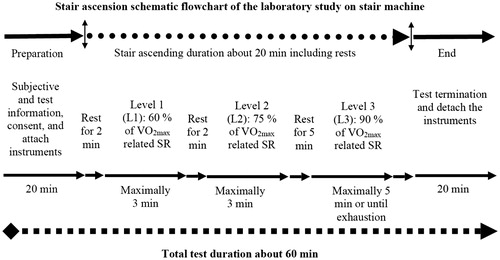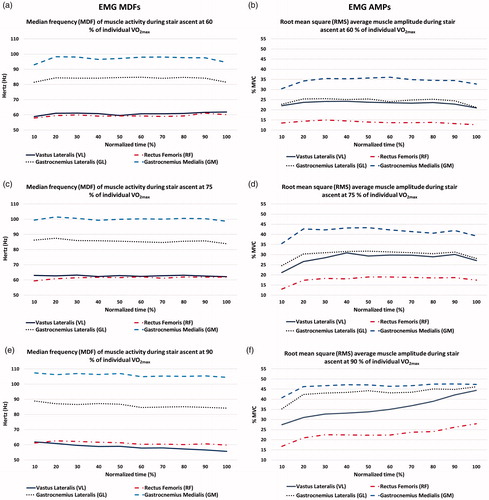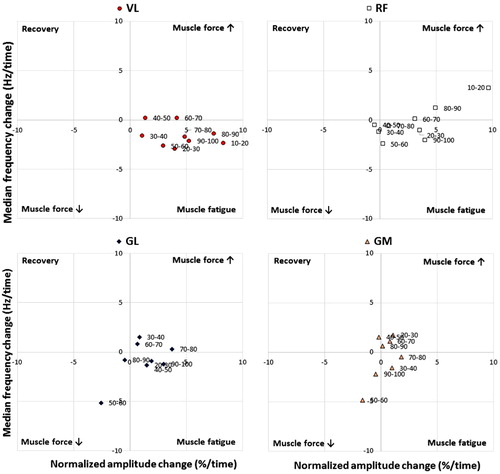Figures & data
Table 1. Anthropometric, gender and maximum aerobic capacity (VO2max) data of the total number of subjects (N = 25) and for the males (N = 13) and females (N = 12) separately with mean (SD).
Table 2. Stair ascending capacity comparisons of three individual step rates for all subjects (N = 25) with mean (SD).
Table 3. Stair ascending capacity comparisons between males (N = 13) and females (N = 12) at L3 (90% of VO2max) with mean (SD).
Figure 3. Average oxygen uptakes in normalized periods (0–100%) for all subjects (N = 25) for 3 min each at L1 (a) and L2 (b) and a maximum of 5 min or until exhaustion at L3 (c). The average absolute ascending times were 3.0, 3.0 and 4.3 min at L1, L2 and L3, respectively.
